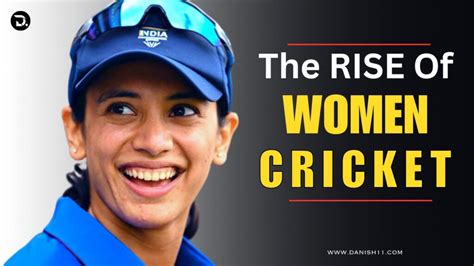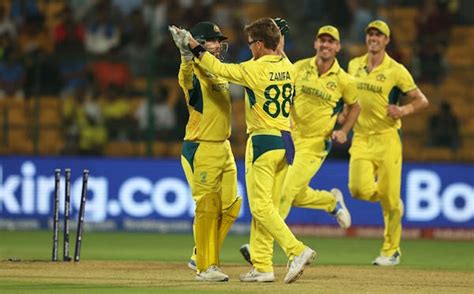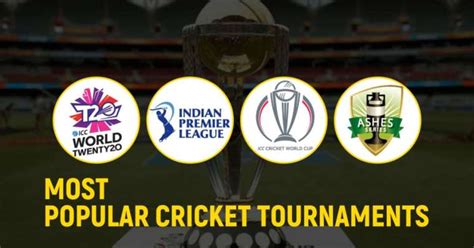Explore the historical rise of women in cricket, their challenges, influential figures, achievements, and future growth opportunities in this comprehensive overview.In recent years, women in cricket have emerged as trailblazers, breaking barriers and making significant strides in a sport traditionally dominated by men. From humble beginnings to the global stage, female cricketers have captured hearts and changed perceptions, shattering stereotypes and proving their prowess. This article delves into the historical journey of women in cricket, highlighting their rise and the key challenges they have faced along the way. We will also celebrate the influential figures whose contributions have paved the way for future generations and explore the advancements and achievements that are reshaping the landscape of women’s cricket today. Join us as we look ahead to the exciting opportunities that lie in wait, ensuring that this remarkable sport continues to thrive for women worldwide.
The Rise Of Women In Cricket: A Historical Overview
The history of women in cricket spans several decades, marked by both triumphs and challenges. The journey began in the late 18th century, with the first recorded women’s cricket match taking place in 1745 in England. While the sport was predominantly male-dominated, women began to forge their path, increasingly gaining visibility in the cricketing world.
In the early 20th century, women’s cricket associations began forming, most notably the English Women’s Cricket Association in 1926. This pivotal moment laid the groundwork for organized competitions and further ignited interest in the sport among females. The establishment of international competitions, such as the Women’s Cricket World Cup, which was first held in 1973, marked a significant milestone for women in cricket.
The 1980s and 1990s saw advancements in media coverage and sponsorship, eventually leading to the professionalization of women’s cricket. Countries like Australia and England began investing more resources to support their women’s teams, and this shift was critical in enhancing the performance and competitiveness of women’s cricket on the global stage.
In recent years, the rise of T20 cricket has revolutionized the format for both women in and men’s games, attracting younger audiences and increasing participation rates. The establishment of franchises in T20 leagues, such as the Women’s Big Bash League and the Women’s Premier League, has further elevated the profile of female cricketers, showcasing their skills to a broader fan base.
Today, women’s cricket is experiencing unprecedented growth, with national teams from around the world competing at elite levels. Notable players, like Ellyse Perry, Mithali Raj, and Virat Kohli, have inspired the next generation of female cricketers, proving that women in cricket can achieve remarkable feats and break the barriers that once limited their participation in the sport.
| Year | Event |
|---|---|
| 1745 | First recorded women’s cricket match in England |
| 1926 | Formation of the English Women’s Cricket Association |
| 1973 | First Women’s Cricket World Cup held |
| 2000s | Professionalization of women’s cricket begins |
| 2010s | Introduction of T20 leagues for women |
| 2020s | Continued growth and popularity of women’s cricket |
As we look to the future, the momentum gained by women in cricket promises a thriving and dynamic landscape that empowers female athletes around the globe.
Key Challenges Faced By Women In Cricket
Despite the significant progress made in the world of cricket, women in the sport continue to face numerous challenges. Here are some of the key issues that hinder their advancement and recognition:
| Challenge | Description |
|---|---|
| Lack of Funding | Women’s cricket often receives less financial support compared to men’s cricket, impacting infrastructure, salaries, and training facilities. |
| Media Coverage | The visibility of women’s cricket in media is considerably lower, which limits fan engagement and sponsorship opportunities. |
| Social Perceptions | Traditional gender roles and societal expectations can create barriers for women pursuing careers in sports, including cricket. |
| Inadequate Infrastructure | Many regions lack proper facilities and resources specifically tailored for women’s cricket development, affecting player progression. |
| Limited Opportunities | Women’s teams often have fewer competitions, making it challenging for players to gain valuable match experience. |
Overcoming these challenges requires a concerted effort from stakeholders across the cricketing world, including governing bodies, sponsors, and media platforms. Increasing support and attention to women in cricket will help pave the way for a more equitable and inclusive sporting environment.
Influential Women In Cricket And Their Impact
Throughout cricket’s history, numerous women in the sport have made significant contributions, paving the way for future generations. Their dedication and accomplishments serve as a source of inspiration while breaking down barriers. Below are some of the most influential figures:
| Name | Country | Contribution |
|---|---|---|
| Belinda Clark | Australia | First player to score a double century in a One Day International (ODI). |
| Sarah Taylor | England | Key player in England’s 2017 World Cup victory and a pioneer for wicketkeepers. |
| Smriti Mandhana | India | A global ambassador for women’s cricket and a key performer in ODIs and T20s. |
| Meg Lanning | Australia | Hauls numerous records and leads Australia’s dynamic women’s cricket team. |
| Ellyse Perry | Australia | Elite all-rounder excelling in both cricket and soccer, representing dual sports at the top level. |
These women have not only shattered records but also catalyzed changes in perceptions about women in cricket. They have shown that female athletes can achieve greatness in a historically male-dominated sport.
Moreover, their influence extends beyond the field. Many have taken on roles as coaches, commentators, and mentors, actively working to create pathways for aspiring women in cricket. Their advocacy for equality and increased representation in the sport illustrates the potential for change and the importance of visibility in encouraging young girls to pursue cricket.
Breaking Barriers: Women In Cricket Achievements
The journey of Women In cricket has seen remarkable milestones that have not only shaped the game but also transformed societal perceptions about female athletes. Over the past few decades, women’s cricket has evolved from a marginalized segment to a prominent feature in the sporting world.
Significant achievements include the increasing visibility of women’s leagues and tournaments, such as the Women’s T20 Super League and the Women’s Premier League, which have provided a platform for female cricketers to showcase their talent on a global stage. These leagues have not only elevated the status of women’s cricket but have also introduced professional pathways for aspiring players.
Moreover, international competitions like the ICC Women’s World Cup and the T20 World Cup have witnessed heightened media attention and fan engagement, contributing to a growing fanbase. The 2017 ICC Women’s World Cup final at Lord’s, which attracted a record audience, exemplifies this shift. With stellar performances from teams across various nations, the event highlighted the competitive spirit and exceptional skills of women cricketers.
In addition to tournaments, individual players like Meg Lanning, Ellyse Perry, and Smriti Mandhana have not only shattered records but also served as role models for young girls aspiring to play cricket. Their accomplishments have played a crucial role in inspiring a new generation of female athletes to pursue sports, breaking down gender stereotypes.
Furthermore, the inclusion of women in leadership roles, both on and off the field, has been pivotal. Female coaches, umpires, and administrators are increasingly taking on significant positions, helping to promote and sustain the growth of women’s cricket globally.
The achievements of Women In cricket are a testament to the dedication, talent, and resilience of female athletes. As they continue to break barriers and set new standards, the future looks promising for women’s cricket, paving the way for further advancements in the sport.
The Future Of Women In Cricket: Opportunities And Growth
The landscape of women’s cricket is evolving rapidly, presenting numerous women in cricket with unprecedented opportunities for growth and development. As the sport gains popularity, several key areas are expected to contribute to the future success of women cricketers.
Firstly, increased investment in women’s cricket at all levels is vital. Governing bodies, sponsors, and organizations are recognizing the importance of women in sports, leading to better funding, infrastructure, and resources. This investment translates into enhanced training facilities, improved coaching, and access to high-quality competitive matches, all of which are crucial for player development.
Secondly, the introduction of professional leagues, such as the Women’s Premier League (WPL), has revolutionized the opportunities available for women cricketers. These leagues not only provide players with the chance to showcase their talents but also generate interest and visibility for the game. More leagues will likely emerge, further increasing participation and professional pathways for young girls aspiring to play cricket.
Moreover, the role of media and social platforms cannot be overstated. As women in cricket gain more airtime and coverage, fan engagement increases, which can enhance the sport’s popularity and support. Documentaries, interviews, and features celebrate the accomplishments of female cricketers, inspiring the next generation and fostering a greater appreciation for their contributions to the sport.
In education and grassroots initiatives, there is a pressing need to create more avenues for young girls to participate in cricket. Schools and community programs are essential in nurturing talent from a young age, ensuring a diverse pipeline of players. Collaborations with educational institutions can lead to better structures for youth competitions and coaching clinics aimed specifically at female participants.
Ongoing advocacy for gender equality in sports continues to break down barriers. Women athletes, organizations, and activists are pushing for equal opportunities, pay, and recognition. This collective movement fosters a more inclusive environment for women in cricket, encouraging not just participation but also leadership roles in the sport.
As we look to the future, the potential for women in cricket is immense. With sustained efforts across various sectors, the stage is set for an era of unprecedented growth and achievement, driving the sport to new heights.
Frequently Asked Questions
What are some key milestones for women in cricket?
Some key milestones include the establishment of the Women’s Cricket Association in the UK in 1926, the inclusion of women’s cricket in the Commonwealth Games in 1998, and the introduction of T20 leagues that have elevated the profile of women’s cricket globally.
How has media coverage changed for women’s cricket over the recent years?
Media coverage for women’s cricket has significantly increased, with major broadcasters now dedicating time to women’s matches, highlighting women’s leagues, and offering platforms for greater visibility, which helps in promoting the sport and its athletes.
What impact has social media had on women’s cricket?
Social media has been a powerful tool for women’s cricket, allowing players to connect with fans, share their stories, and increase awareness of the sport. It has also facilitated grassroots movements, campaigns, and crowdfunding efforts to support women’s cricket initiatives.
Who are some notable female cricketers who have made an impact on the sport?
Notable female cricketers include Mithali Raj, who is the highest run-scorer in women’s One Day Internationals, Ellyse Perry, a dual-sport athlete who has excelled in both cricket and soccer, and Charlotte Edwards, who captained England to multiple victories.
What are some current challenges faced by women in cricket?
Women in cricket continue to face challenges such as pay disparities compared to their male counterparts, limited media exposure, and the need for improved infrastructure and resources tailored to women’s teams.
How are organizations working to promote women’s cricket?
Organizations like the International Cricket Council (ICC) and various national boards are implementing initiatives such as funding for women’s leagues, hosting training programs, and promoting grassroots cricket to ensure a sustainable future for women’s cricket.
What is the significance of the growing popularity of women’s cricket?
The growing popularity of women’s cricket signifies a shift in cultural perceptions, as it opens up more opportunities for female athletes, inspires young girls to participate in sports, and encourages equality in professional athletics.









